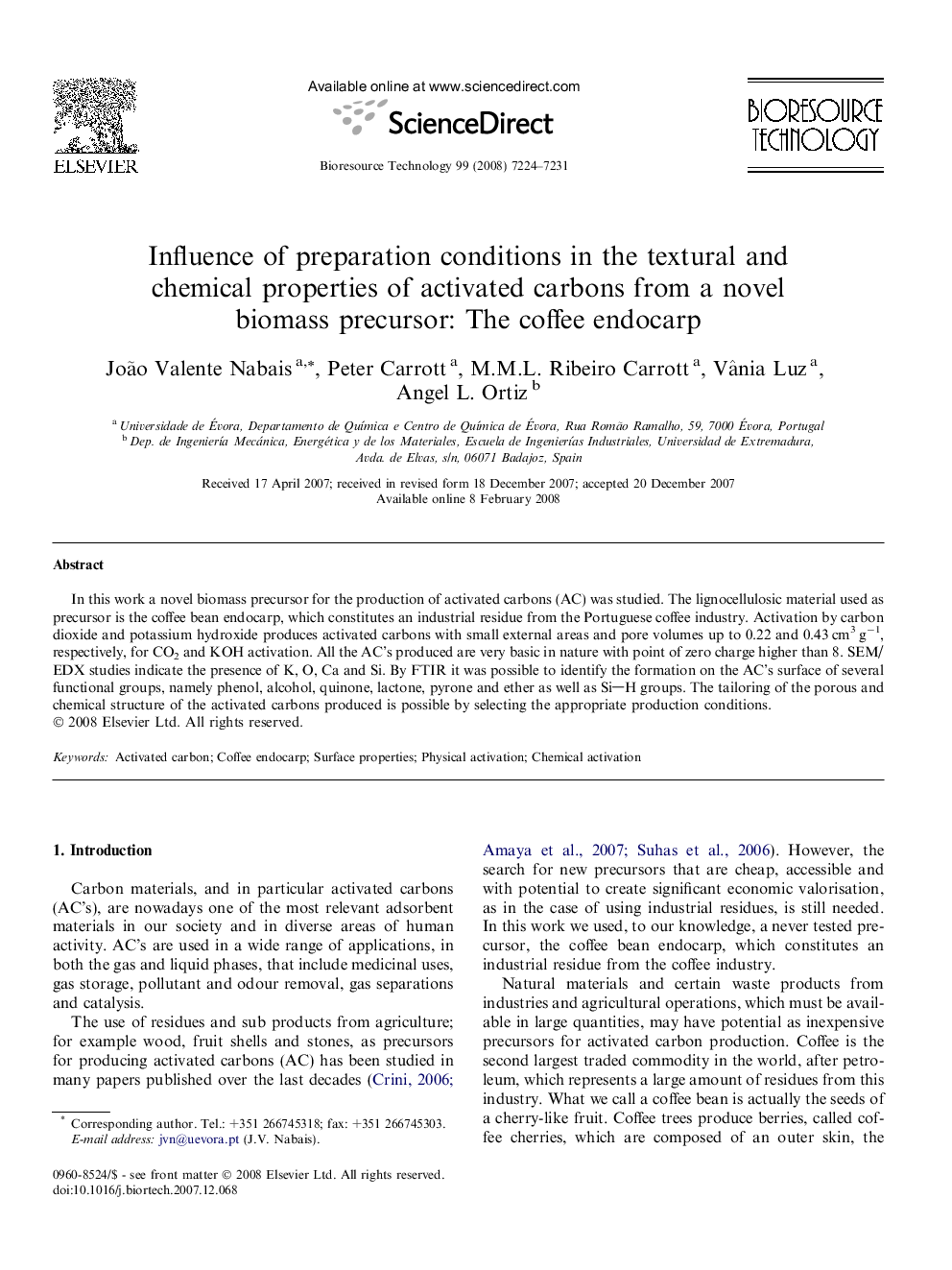| Article ID | Journal | Published Year | Pages | File Type |
|---|---|---|---|---|
| 685308 | Bioresource Technology | 2008 | 8 Pages |
In this work a novel biomass precursor for the production of activated carbons (AC) was studied. The lignocellulosic material used as precursor is the coffee bean endocarp, which constitutes an industrial residue from the Portuguese coffee industry. Activation by carbon dioxide and potassium hydroxide produces activated carbons with small external areas and pore volumes up to 0.22 and 0.43 cm3 g−1, respectively, for CO2 and KOH activation. All the AC’s produced are very basic in nature with point of zero charge higher than 8. SEM/EDX studies indicate the presence of K, O, Ca and Si. By FTIR it was possible to identify the formation on the AC’s surface of several functional groups, namely phenol, alcohol, quinone, lactone, pyrone and ether as well as SiH groups. The tailoring of the porous and chemical structure of the activated carbons produced is possible by selecting the appropriate production conditions.
